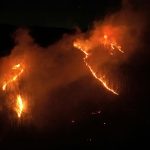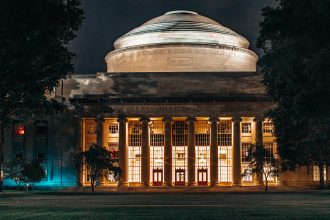1. Pre-Writing Analysis:
How Interstellar Visitors Redefine Planet Formation Theories
Introduction: Unforeseen Cosmic Messengers
The vastness of space has always held mysteries, but recent discoveries of objects from beyond our solar system are forcing astronomers to reconsider fundamental theories. These interstellar visitors are not just curiosities; they are providing unprecedented insights into the processes that shape planets across the galaxy.
The Rise of Interstellar Objects
For decades, our understanding of planetary systems was largely confined to what we observed within our own cosmic neighborhood. The detection of objects like ‘Oumuamua and Borisov marked a paradigm shift, proving that material from other star systems can indeed traverse the immense distances between stars and enter our solar system.
What Are Interstellar Visitors?
These celestial bodies are defined by their hyperbolic trajectories, meaning they are not gravitationally bound to our Sun. Their speed and path indicate they originated from outside our solar system, carrying with them clues about their home star systems and the interstellar medium.
Key Interstellar Discoveries
- ‘Oumuamua: The first confirmed interstellar object, characterized by its unusual elongated shape and acceleration.
- Borisov: A comet displaying typical cometary activity, offering a glimpse into the composition of comets from other stellar nurseries.
- 3I/ATLAS: Another visitor that provided further data points for scientists studying these rare phenomena.
Rewriting the Rules of Planet Formation
The presence and characteristics of these interstellar travelers are challenging long-held assumptions about how planets come into being. They suggest a more dynamic and interconnected universe than previously imagined.
Implications for Planetary Composition
Studying the makeup of interstellar objects can reveal the chemical ingredients available for planet formation in different stellar environments. This helps us understand the diversity of exoplanets and the conditions necessary for life.
Understanding Stellar System Evolution
The very existence of these objects points to a much more efficient process of material exchange between star systems than previously thought. This implies that the building blocks of planets might be more widely distributed throughout the galaxy.
Scientists are now exploring how these interstellar visitors might:
- Deliver organic molecules to nascent planets, potentially seeding them with the precursors to life.
- Influence the early chemical composition of protoplanetary disks.
- Provide evidence for the prevalence of certain types of planetary systems.
The Future of Interstellar Exploration
With each new detection, our ability to study these cosmic nomads improves. Future observations will undoubtedly refine our understanding of galactic dynamics and the universal mechanisms of planet formation.
What Scientists Hope to Learn Next
The ongoing analysis of these objects promises to shed light on:
- The frequency of interstellar object encounters.
- The diversity of compositions among these visitors.
- The dynamics of material transfer between stellar systems.
This field of research is rapidly evolving, pushing the boundaries of our cosmic perspective. For more on the fascinating world of exoplanets and their formation, you can explore resources from NASA Exoplanet Exploration.
Conclusion: A New Cosmic Perspective
Interstellar visitors are more than just passing celestial bodies; they are invaluable cosmic messengers. By studying ‘Oumuamua, Borisov, and others like them, scientists are gaining a profound new understanding of how planets form and evolve across the universe. This ongoing exploration is fundamentally reshaping our cosmic narrative.
1. Suggested URL Slug
`interstellar-planet-formation`
2. SEO Title
`Interstellar Visitors: New Planet Formation Insights`
3. Full Article Body
How Interstellar Visitors Redefine Planet Formation Theories
Introduction: Unforeseen Cosmic Messengers
The vastness of space has always held mysteries, but recent discoveries of objects from beyond our solar system are forcing astronomers to reconsider fundamental theories. These interstellar visitors are not just curiosities; they are providing unprecedented insights into the processes that shape planets across the galaxy.
The Rise of Interstellar Objects
For decades, our understanding of planetary systems was largely confined to what we observed within our own cosmic neighborhood. The detection of objects like ‘Oumuamua and Borisov marked a paradigm shift, proving that material from other star systems can indeed traverse the immense distances between stars and enter our solar system.
What Are Interstellar Visitors?
These celestial bodies are defined by their hyperbolic trajectories, meaning they are not gravitationally bound to our Sun. Their speed and path indicate they originated from outside our solar system, carrying with them clues about their home star systems and the interstellar medium.
Key Interstellar Discoveries
- ‘Oumuamua: The first confirmed interstellar object, characterized by its unusual elongated shape and acceleration.
- Borisov: A comet displaying typical cometary activity, offering a glimpse into the composition of comets from other stellar nurseries.
- 3I/ATLAS: Another visitor that provided further data points for scientists studying these rare phenomena.
Rewriting the Rules of Planet Formation
The presence and characteristics of these interstellar travelers are challenging long-held assumptions about how planets come into being. They suggest a more dynamic and interconnected universe than previously imagined.
Implications for Planetary Composition
Studying the makeup of interstellar objects can reveal the chemical ingredients available for planet formation in different stellar environments. This helps us understand the diversity of exoplanets and the conditions necessary for life.
Understanding Stellar System Evolution
The very existence of these objects points to a much more efficient process of material exchange between star systems than previously thought. This implies that the building blocks of planets might be more widely distributed throughout the galaxy.
Scientists are now exploring how these interstellar visitors might:
- Deliver organic molecules to nascent planets, potentially seeding them with the precursors to life.
- Influence the early chemical composition of protoplanetary disks.
- Provide evidence for the prevalence of certain types of planetary systems.
The Future of Interstellar Exploration
With each new detection, our ability to study these cosmic nomads improves. Future observations will undoubtedly refine our understanding of galactic dynamics and the universal mechanisms of planet formation.
What Scientists Hope to Learn Next
The ongoing analysis of these objects promises to shed light on:
- The frequency of interstellar object encounters.
- The diversity of compositions among these visitors.
- The dynamics of material transfer between stellar systems.
This field of research is rapidly evolving, pushing the boundaries of our cosmic perspective. For more on the fascinating world of exoplanets and their formation, you can explore resources from NASA Exoplanet Exploration.
Conclusion: A New Cosmic Perspective
Interstellar visitors are more than just passing celestial bodies; they are invaluable cosmic messengers. By studying ‘Oumuamua, Borisov, and others like them, scientists are gaining a profound new understanding of how planets form and evolve across the universe. This ongoing exploration is fundamentally reshaping our cosmic narrative.
4. Excerpt
The arrival of interstellar objects like ‘Oumuamua and Borisov is revolutionizing our understanding of planet formation, revealing a more dynamic and interconnected cosmos than ever before.
5. Image search value for featured image
interstellar object passing by planet formation nebula



